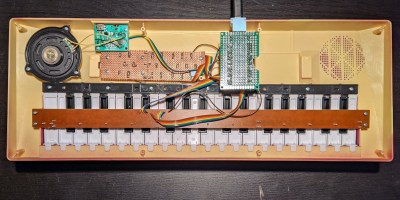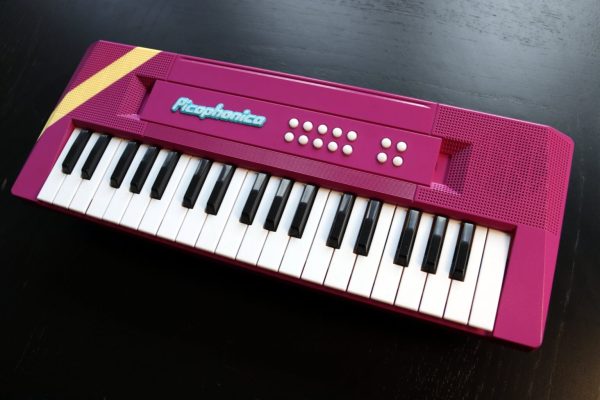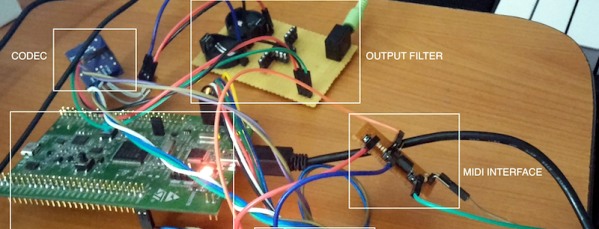When someone gives you a crappy little toy keyboard, what can you do? Sadly plunk on the thing one note at a time? Well yes, but that’s not going to get you on Hackaday. Do what [Turi] did and give that thing a complete overhaul.
[Turi] threw away the original controller board, keeping only the keys, buttons, case, speaker, and a little bit of the original powder yellow enclosure. The Picophonica’s new brain is, you guessed it, a Raspberry Pi Pico. This enables [Turi] to use [Ryo Ishigaki]’s pico_synth_ex synthesizer and introduce MIDI out via USB-C.
 The new engine does things that little keyboard could never have dreamed of originally, especially considering it wasn’t even polyphonic. Those fourteen white buttons now control things like sustain, cutoff, LFO rate, decay, and so on. Now it sounds great!
The new engine does things that little keyboard could never have dreamed of originally, especially considering it wasn’t even polyphonic. Those fourteen white buttons now control things like sustain, cutoff, LFO rate, decay, and so on. Now it sounds great!
Be sure to check out the brief build video after the break. Excluding drums, the soundtrack was made entirely on the Picophonica.
Of course, Picos aren’t just good for musical keyboards. Use one to convert an old proprietary keyboard to PS/2, or create your own.













